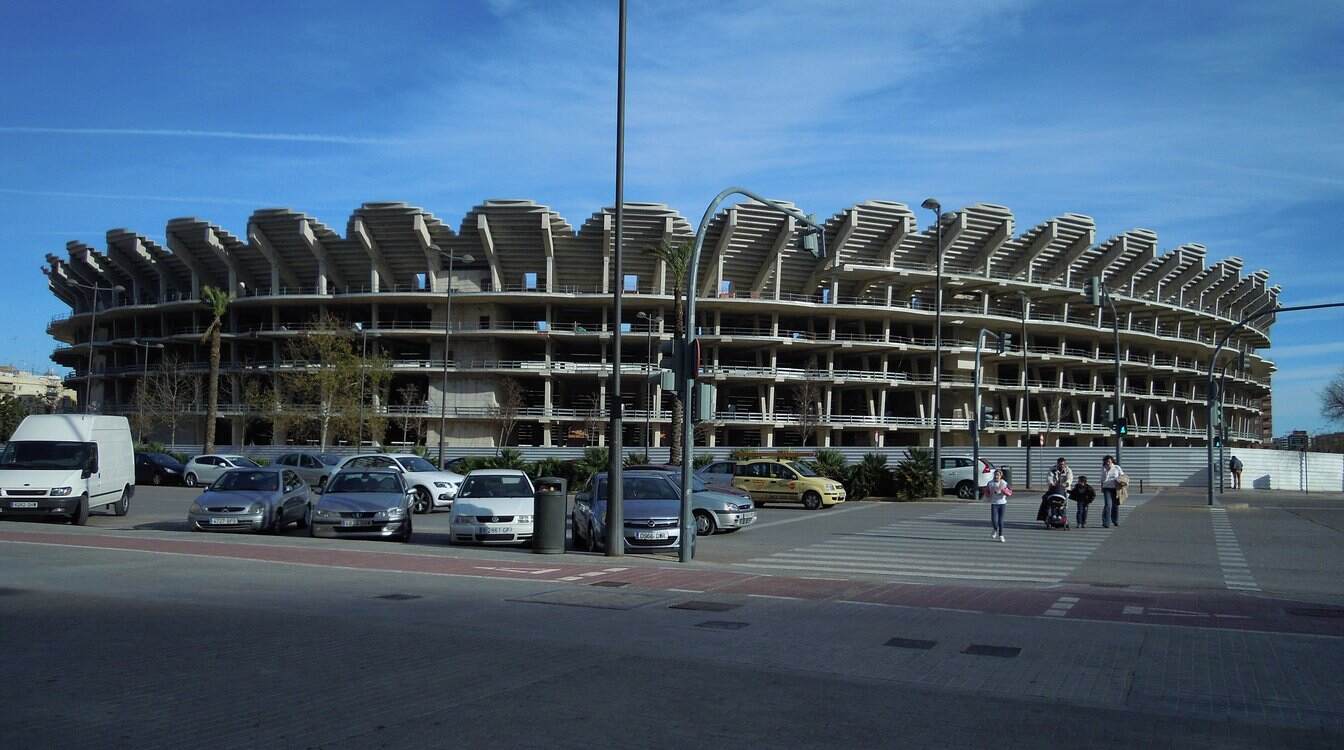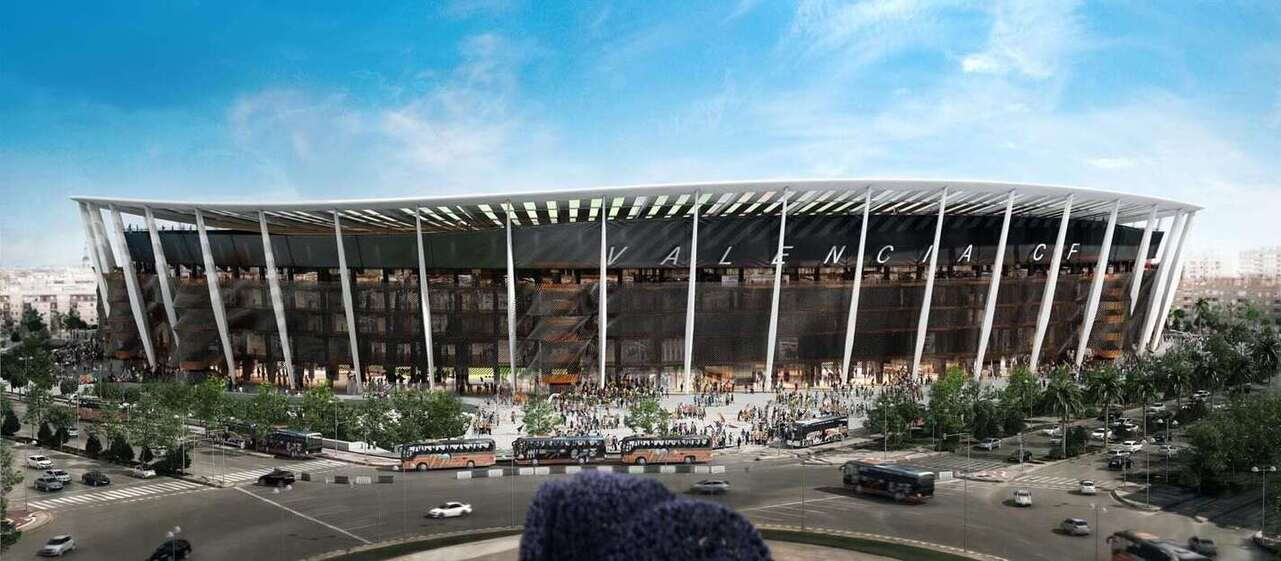Spain: Never-ending story of Valencia's new home
source: StadiumDB.com; author: Tomasz Sobura
 "Los Che" are getting ready to resume work on Nou Mestalla thanks to money from CVC Capital Partners. The history of this stadium is an incredible story full of twists and turns.
"Los Che" are getting ready to resume work on Nou Mestalla thanks to money from CVC Capital Partners. The history of this stadium is an incredible story full of twists and turns.
Advertisement
A club from a city in eastern Spain announced plans to build a new venue back in 2005. It was decided to locate it on the site of the former factory in the Benicalap district. The side from Estadio Mestalla was supposed to move there within a few years and the relocation was not unjustified, as at that time the club regularly fought in La Liga for places that guaranteed participation in the Champions League.
Now it is not as good as in the best period of the club in the first decade of the 21st century, but there is nothing to complain about, taking into account Valencia's financial situation. The team is fighting bravely and is in the middle of the La Liga standing. The main problem for Valencia CF and its fans is the lack of a new ground. Supporters need to be patient and perhaps take a short break from the news about stadium construction, and this can be achieved by visiting live online casino LV BET.
 © Ravave
© Ravave
When Valencia CF revealed for the first time their intention to erect a new ground, the club seemed to be in charge of the right person. President Juan Bautista Soler had extensive experience in the real estate market. Therefore, the announcement to build a venue with a capacity of over 70,000 was not that shocking, although filling such a large facility week after week was quite challenging.
The idyll did not last long as Soler resigned in March 2008, doubting the success of the project. Regarding the stadium, the main concrete structure of Nou Mestalla was created between August 2007 and February 2009, but work was stopped shortly thereafter for financial reasons.
At that time, there were media reports that the club's debts amounted to € 400 million and players were having trouble receiving regular wages. As a result, the club was forced to sell off its best footballers. Later, it was cut off from UEFA money as it did not qualify for the Champions League.
In December 2011, a ray of hope appeared, which was the conclusion of an agreement with Bankia to complete the construction of the stadium. At the same time, the club's management decided to transfer the "old" Mestalla - still used by the club - into the hands of the bank.
Unfortunately, the contract with the bank fell apart shortly thereafter, which forced the club in 2013 to rescale the stadium design to 61,500 seats. The architects also added an underground car park to the plans and reduced the size of the roof. However, no date has been set for construction to resume.
The takeover of the club by Peter Lim in 2014 only exacerbated the stagnation in the sports and financial fields. For several years, practically nothing happened with the construction of the venue. It was not until 2017 that Valencia announced that it was in talks with the City Council to finish the construction, but the concept was changed once again. This time it was decided to shrink the stadium to 54,000.
The real twist came in August of this year following a La Liga deal with CVC Capital Partners, which provided clubs with 40-year low-interest loans in exchange for a share of the profits. The money from the fund will allow the construction of the ground to be completed, for which at least € 100 million will be needed. It is not yet known exactly when the works would start.
The money from the CVC is expected to reach the club on December 10, when the applicable agreement with the fund is to be signed. Valencia will not receive the entire € 119 million right away, but only a fraction of it. The remaining parts of this sum will be paid in installments over the next 3 years. This is a bit of a problem for the club's management.
What's more, many local politicians are losing their patience as they are concerned about Valencia's lack of progress in building a new venue. Some officials even demand the withdrawal of ATE, i.e. the permit for the construction of a stadium, the demolition of Mestalla and the development of urban areas specified in this document.
Earlier, the management of the club tried to extend the above-mentioned permit for a few more years, for which the city authorities do not want to give approval. There is a lot of risk that ATE will be revoked due to the club's fault, and that could even bury Valencia's stadium plans.
Advertisement
 StadiumDB
StadiumDB